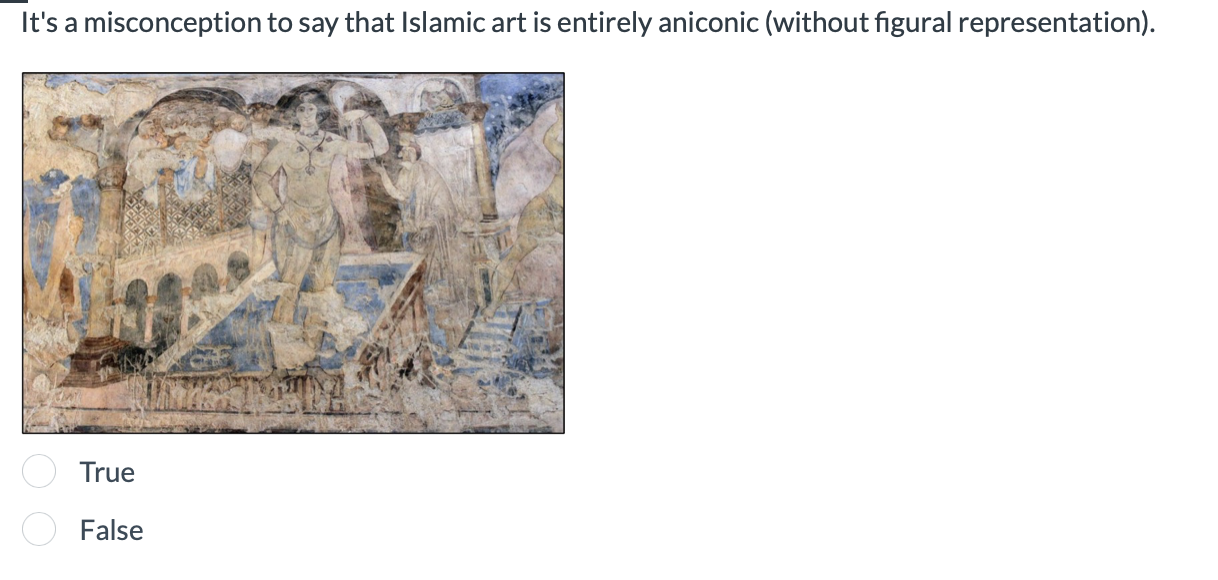It's a misconception to say that Islamic art is entirely aniconic (without figural representation). True or False?

Understand the Problem
The question is asking whether the statement about Islamic art being entirely aniconic is a misconception. This involves understanding the characteristics of Islamic art, particularly regarding figural representation.
Answer
True
The statement is true. It is a misconception to say that Islamic art is entirely aniconic. While religious Islamic art is often aniconic, secular Islamic art has historically included figural representation.
Answer for screen readers
The statement is true. It is a misconception to say that Islamic art is entirely aniconic. While religious Islamic art is often aniconic, secular Islamic art has historically included figural representation.
More Information
Islamic art is often mistakenly thought to be entirely aniconic, but secular art within the Islamic world has included depictions of humans and animals.
Tips
A common mistake is to assume that all branches of Islamic art follow the same rules as religious art.
Sources
- Explaining the Misconception of Figural Representation in Islamic Art - wamupdates.worcesterart.org
- Figural Representation in Islamic Art | Essay - metmuseum.org
- Arts of the Islamic World - khanacademy.org
AI-generated content may contain errors. Please verify critical information